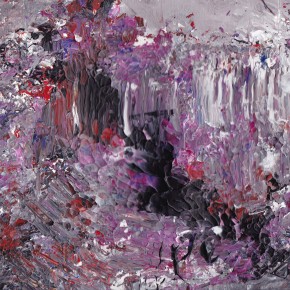Welcome, readers, to this month’s issue of Synchronized Chaos Magazine. This month we look into the concept of Freedom Within Form. Our contributors present journeys, situations, possibilities, and adventures, all coming with their own inevitable logistical challenges. Also there’s abstract art and formal poetry on a wide array of subjects, where a lot is said within the rules.
Brooke McCarley’s Appalachian Trail memoir, Cristina Deptula’s piece on the Madame Mars interactive educational project, which aims to educate and inspire girls concerning the history of women in the space program, Alan Swyer’s short story Havana Moon, and Kathleen Popa’s novel To Dance in the Desert, as reviewed by Liz Hughes in her monthly Book Periscope column, all illustrate physical, psychological and relational journeys that represent great adventure, but come with their own set of natural challenges. Travelers need to work within and adapt to the requirements of the journey, the landscape, and their fellow creatures.
Ryan Hodge, in his monthly column Play/Write, portrays adventure in the virtual realm, showing how conceptualizing a creative story like a video game, starting with a high-stakes situation and envisioning how it will play out, rather than planning everything from the top down, can enhance a writer’s craft. Rather than pre-defining a character’s personality and how they will respond to situations, simply create a situation and see what happens.
In Elsie Augustave’s review of Dorothy Anne Spruzen’s murder mystery Not One of Us, we also see the response of characters to a sudden act of violence, incongruous within their insular world. Instead of creative freedom, untamed human nature brings violence and deceit. Even societies tightly controlled by social norms and gossip can only do so much to subdue the negative side of our instincts.
Elizabeth Hughes also reviews Rita D’Orazio’s murder mystery Remember Me, Adam Brown’s Alterien: Once was Lost, Immanual Joseph’s suspense novel Brahma’s Maze, and Charles Schneider’s A Portrait in Time, and these novels also explore the limits of control we have over our lives and our own natures. Alterien situates a chance reunion between relatives in a world of intergalactic secret agents and spies, A Portrait in Time presents a sudden meeting between a museum curator and the subject of an esteemed painting, under highly unusual circumstances, and Remember Me suggests that close families may still have secrets as mysterious as any courtroom intrigue. These stories cause readers to contemplate how much we really understand about our situations, and how well we can know even the people who share our homes and professional lives.
In Brahma’s Maze, the lead character, Tarun, reacts to the violent murder of his family by constructing a logical, orderly plan for revenge, but finds that it spins out of his grasp, endangering him as well. Joseph poses the question of when it is right for us to seek ways to bring about justice on our own, especially in environments where no lawful means exist to address a wrong. How do we create ‘form’ in society when we need a certain degree of structure for safety, without destroying people’s freedom and lives?
In this month we present several examples of formal poetry, with specified rhyme, rhythm and meter, or with at least careful attention paid to these formal elements. Pieces come from Carol Smallwood, Ryan Favata, Kevin Sampsel, and Grant Tarbard. These submissions express much in just a few lines, though, with colorful images and complex thoughts and associations. In Madeleine L’Engle’s children’s fantasy novel A Wrinkle in Time, insightful alien character Aunt Beast mentions the form of ‘Earth poetry’ known as a sonnet, that has a strict form but the poet has total freedom within it.
Jeff Rasley’s essay “The Phoenix Rises at the University of Chicago” revels in the glory days of his old college football team, torn between the multiple goalposts of athleticism, social progressiveness and intellectualism. And two of Robert Bates’ three short stories, “Glory” and “Knockout”, involve action sports, which, as he illustrates, also have highly specified rules and unpredictable outcomes, akin to a video game or a sonnet.
Bates’ third piece “Second Chances” suggests that we can reawaken memories and dreams from our pasts because we often stay much the same people, even when our circumstances change. Our human nature represents a kind of ‘form’ within which we can make choices and exert influence.
Al Preciado talks about the view from his artist studio in his poem “Jacaranda Blossoms,” about the stable place that keeps him grounded and allows him to branch out and create imaginative work. In Preciado’s other piece, ‘Rising,’ he turns to the unique shapes of clouds to keep him focused while traveling through the Rocky Mountains to visit a loved one. W. Jack Savage’s abstract art seems completely wild and random, but in fact reflects attention to color, balance, and shape.
Shamanic practitioner Holly Sisson contributes a few short poems about getting in tune with the universe, moving and submitting to its rhythms. She points out that there’s no need to force others to join her, since we are all on our own paths and there is only so much we can control. Alexis Durante portrays the physical manifestation of emotion, showing how our bodies are simultaneously at the mercy of life circumstances and marvelous instruments to reflect what we feel.
Ayokunle Adeleye’s column deals with one of the natural and societal limitations that often comes with being young or at the beginning of one’s career: a tight budget. He urges his fellow young Nigerian students and entrepreneurs to invest in their futures rather than buying flashy items just to show off. One can gain the ability to bring about freely chosen long term goals by living within restrictions in other areas.
We hope that you will make reading through this issue of Synchronized Chaos Magazine one of your freely chosen goals, and invite you to enjoy the work of our contributors.
- Brooke McCarley’s Appalachian Trail journey
- W. Jack Savage’s We Played There As Kids



mlrkwgajyysifwwobrwfqqtyi
wslgxqadvaorcfwamegrztuce